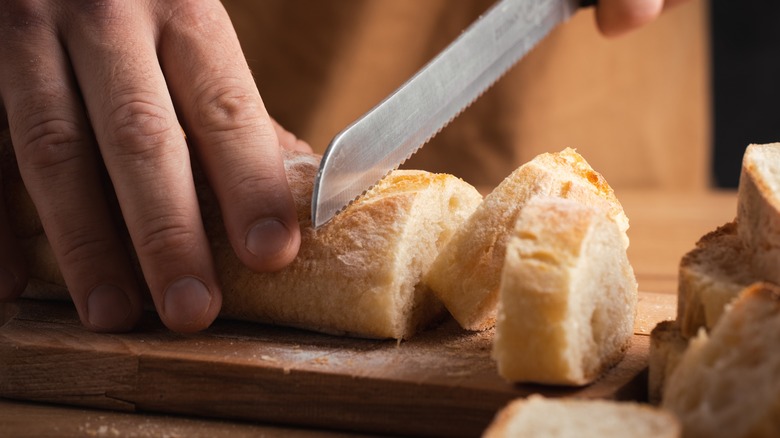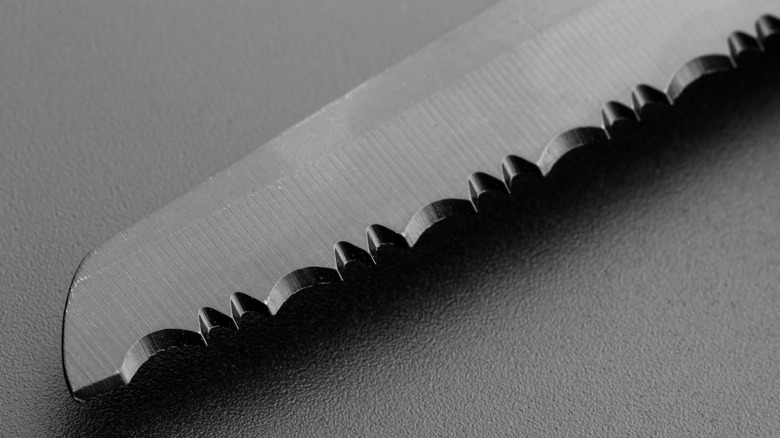Why It Pays To Use A Double-Serrated Knife
Serrated knives are one of those great kitchen inventions that we give thanks for any time we have to cut into a new loaf of bread or a big, juicy watermelon. The ease with which the sharp, saw-like teeth cut through food rival that of even the sharpest chef's knife. And though you can't mince or dice or chop with a serrated knife, you'd be hard-pressed to find a more useful slicing tool anywhere. Which is why, if you are without, you should add one to your kitchen arsenal immediately.
But before you go out and buy the first cool-looking knife that tickles your fancy, you should know that not all serrated knives do the job demanded of them. Depending on their design and price point, some serrated knives will actually do more harm than good to the ingredients you're trying to cut. Ever tried to cut a sandwich in half only to have the knife slip and catch and destroy the whole thing? Yeah, that's no fun. So, when you're out shopping, take a good look at a double-serrated knife.
Though decidedly more expensive, you get what you pay for because double-serrated blades will do the job five times better than a standard one. Designed with efficiency in mind, a double-serrated knife is going to make everything from slicing bread to tomatoes a breeze.
More teeth increase cutting power
With a double-serrated knife, you get double the amount of sawing power thanks to the addition of more sharp cutting teeth. However, the key here is that the cutting teeth are not all uniform size. Standard serrated knives come either with wide gullies between very few teeth or shallow gullies with many teeth. Tests have shown that the former, wider scalloped knives make for better cutting instruments. So, how does the double-serrated knife with its myriad teeth reconcile this fact? It combines the two for optimal efficiency.
Double-serrated knives come with wide gullies and well-spaced serrations, between which are a series of smaller teeth. This results in two things. First, on primary contact, the smaller teeth grab and maximize the surface area of the cutting space and get past any tricky bits of crust or rind. In doing so, they pave the way for the larger serrations to into the food and provide a smooth, well-controlled cut. No decimated sandwiches with these knives.
A good double-serrated knife will easily be above $100. If that seems steep, consider the fact that it will more than likely last for least five to six years and still maintain its edge. Compare that cost to the amount you'll spend on bread and vegetables in any given year, and you'll see that the knife pays for itself very quickly. So in reference to the title, it does indeed pay to use a double-serrated knife.

